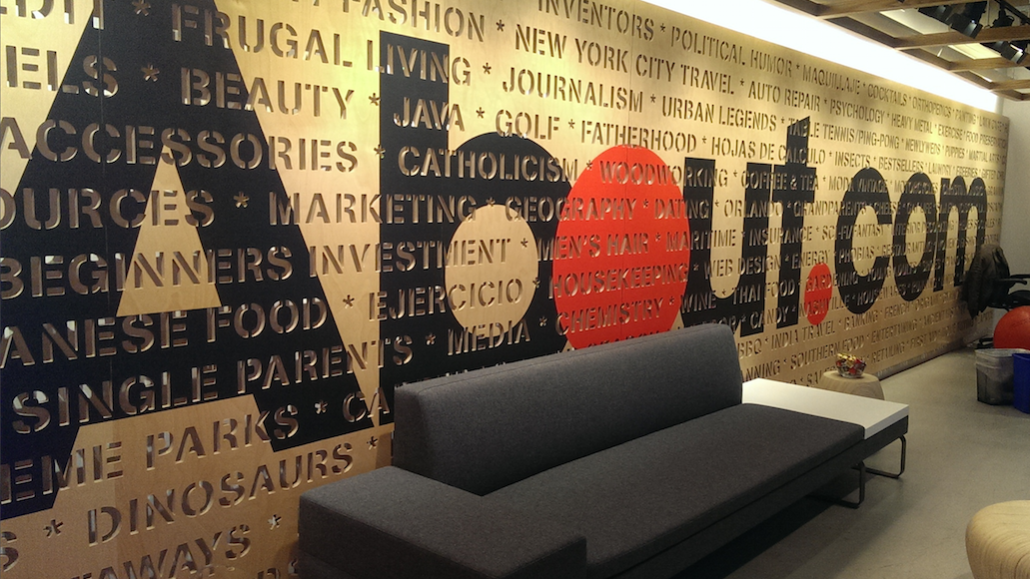
About.com’s strides into modernity continue this week with a new, much-needed redesign and a native ad pitch to brands.
The redesign, the site’s first major overhaul in a decade, marks the latest step in a slow-but-steady turnaround for About.com. With its new design, About.com has ditched its famously cramped look for one that gives its articles and images more room to breathe. The redesign also marks the first time that About.com has featured prominent social sharing buttons, underscoring how behind-the-times it’s been until now. The site is also experimenting with story forms (“7 of the best (worst) dancers on the Internet“) that work well on social channels, signaling that it’s looking beyond its old content approach.
For any other site, these changes wouldn’t be a big deal, but for About.com, which gets 85 million unique visitors a month without even trying, they’re proof that the site is putting a lot of thought into its new direction. “We have to present this stuff in a more engaging way,” said Neil Vogel, CEO of About.com. “We have to make our travel site look like a travel site and our health site more like a health site.”
But the redesign is more than just a cosmetic upgrade. Under the hood, About.com’s content strategy is increasingly data-heavy, thanks to its three-person data team. The move was a necessity. About.com has more than 3.5 million pieces of content about a wide range of topics, and the site’s data scientists were charged with making sense of how people are jumping between articles and what they’re most interested in searching for. This not only helps the site figure out what to focus on but should also help sweeten its image in the eyes of advertisers.
Vogel said that one of the site’s biggest advantages is that its content is inherently intent-driven. Readers who search Google for travel tips and land on the site, for example, are ripe targets for travel advertisers looking to get their attention. “We know what the Internet is looking for,” Vogel said.
About.com has already translated that into native placements for brands like Norton and Merrell, with brands like Disney expected to join them in October.

Despite About.com’s traffic and content well, there are still questions about whether the site can truly adapt for a socially driven Web that feels at odds with how About.com does business. While the site’s focus on evergreen problem-based content performs well in search results, it’s less likely to get shared: Less than 10 percent of About.com traffic comes from social channels. That’s the exact opposite trend that’s driving growth at most publishers. (About.com’s traffic is essentially flat year-on-year.)
“They are still interesting from a scale perspective, but it remains to be seen whether they can change consumer behavior to their benefit to grow,” said Craig Atkinson, chief digital officer at PHD.
About.com, however, seems to understand today’s content climate, as well as its place in it. And while it’s experimenting with more social-friendly stories, it’s still holding on to its core content strategy.”We’re never, ever going to be a place that’s 50 percent social,” said Vogel. “We’re just not that kind of content.” At least it seems About knows what it’s about.
More in Media

Media Briefing: ‘Cloudflare is locking the door’: Publishers celebrate victory against AI bot crawlers
After years of miserably watching their content get ransacked for free by millions of unidentified AI bot crawlers, publishers were finally thrown a viable lifeline.

How Vogue could navigate potential industry headwinds as Anna Wintour — who agency execs say made ad dollars flow — brings on new edit lead
Anna Wintour’s successor at Vogue will have to overcome the myriad of challenges facing fashion media and the digital publishing ecosystem.

Here are the biggest misconceptions about AI content scraping
An increase in bots scraping content from publishers’ sites represents a huge threat to their businesses. But scraping for AI training and scraping for real-time outputs present different challenges and opportunities.





